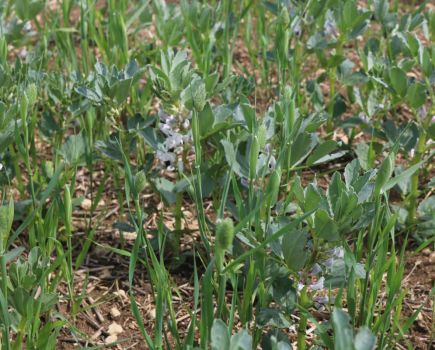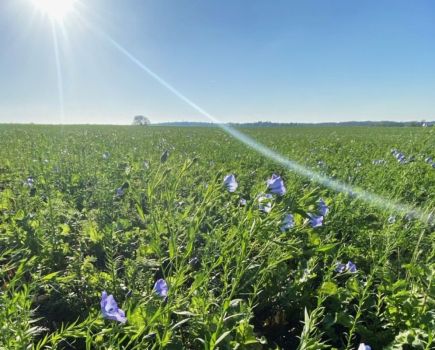As integrated pest management continues to gain importance, CPM looks at some of the research projects and tools aimed at helping growers to adopt it more widely.
“There isn’t a clear way of linking IPM activities with profitability and crop performance.”
By Mike Abram
It may seem as though since leaving the EU, UK research institutions are no longer able to access and take part in EU-funded projects. But, that’s not the case.
As part of the Trade and Cooperation Agreement, the UK agreed it would associate to some of the EU’s research programmes including Horizon Europe – a €95.5 billion funding programme for research and innovation. Soil health and food is one of five key mission targets for the programme.
Research into integrated pest management (IPM) in particular has benefited from the continued access to Horizon Europe funding with three projects currently receiving support.
Equally, two other UK-based projects (see boxes) are also supporting research into IPM, which is crucial in helping to deliver sustainable crop protection practices that are practical and effective, while reducing the reliance on pesticides, and their associated risks to the environment, human health, and non-target species.
Reducing pesticide use by 50% by 2035 through farmers adopting IPM is the overall aim of IPM WORKS, one of the Horizon Europe-funded projects, says Andrew Christie, an agronomist from the James Hutton Institute.
The project involves 31 partners from 16 European countries, coordinated by the French National Research Institute for Agriculture, Food and the Environment (INRAE). It uses a network of farmers to progress further adoption of IPM through peer-to-peer learning and other activities, and to demonstrate IPM works – e.g. it lowers reliance on pesticides while reducing costs and enhancing profitability.
Achieving that aim in Scotland is not without its challenges, explains Andrew. “We have a cool, damp climate, short weather windows, a long growing season and it’s often difficult to travel on fields due to ground conditions.”
Cropping is dominated by malting barley, with limited varietal selection, plus some winter wheat and potatoes, but options for break crops are restricted to mostly oilseed rape, vining peas, and beans, he adds.
Andrew has put together a network of Scottish farmers in Perthshire, Angus and Fife to demonstrate IPM techniques, such as implementing cover and companion cropping, intercropping, using biostimulants, and improving nitrogen use efficiency.
Hub farms are used to demonstrate these practices to other growers in the area, while also using events such as Arable Scotland and Potatoes in Practice to show off new technologies such as steam and electrical weeders.
Farmers can also test IPM techniques more scientifically in the project using in-field trials, says Andrew. “Through the project, I can provide resources to measure outcomes from a comparison of a new technique versus the farm standard, which helps our hub farmers to assess the effect of a new approach relating to the context of their own farm.”
An example has been tramline trials in Skyscraper winter wheat, which have compared a standard four-spray fungicide programme with an alternative ‘biofortification’ programme using elicitors to trigger plant defences, adding foliar nutrition to improve plant health, and the use of biological plant protection products.
During the two years of comparisons, Andrew says the alternative approach achieved comparable control up to flag leaf, which showed potential savings could be made early in programmes. “We still have colder winters in our part of Scotland, so perhaps we see the benefit from hard frosts to help knock back pest and diseases early in the season.”
In year one, differences were more apparent after a late season yellow rust outbreak, although Andrew suggests if there was a decision support tool that could identify when an infection was likely, the biofortification programme could be more effective with more timely applications.
That led to a 0.75t/ha yield difference in favour of the fungicide treatment, and although it cost £55/ha more to apply, the higher yield more than paid for the extra cost.
High septoria pressure was the main challenge in the second year, where the trial also included an untreated tramline. “Septoria infection reached over 50% in the untreated, but incidence in both the fungicide programme and alternative biofortification programme remained below 10%.”
The comparable control between the two programmes wasn’t what Andrew was expecting, but, while final yield analysis is still being carried out by ADAS, there also appears to have been a yield penalty from the biofortification programme again.
“In year one it was clear that disease was the major cause of the yield penalty, but in year two it was less clear. Was there an asymptomatic level of disease that caused the effect or is there an issue with diversion of energy for the elicitors to induce resistance within the plant that reduces yields?
“A trade-off between induced resistance and yield has been reported previously in other trials but it’s difficult to know for certain in a field trial with so many other triggers for plant defence responses.”
A second split-field trial has also compared the use of companion crops in OSR. The trial was primarily set up because of cabbage stem flea beetle concerns, but ultimately, they mostly didn’t materialise.
Establishment was slightly better in the OSR with companion crops at 33 plants/m2 compared with 22 plants/m2 without. “We also found a 62% reduction in leaf loss in the OSR with companion crop.”
Checks suggested final yields were similar in both systems, achieving averages of 4.4t/ha, but economically the companion crop use was cheaper as the more conventionally grown crop had starter fertiliser applied and a pre-emergence herbicide, which the companion crop didn’t, says Andrew, leading to an overall saving of £155/ha.
“This was a success because we’ve reduced our inputs, had cost savings and maintained outputs. That’s exactly what we’re trying to achieve with the IPM Works hub, and even more crucially it’s convinced some of our members it works in practice and they’re now adopting it on their farms.”
A second Horizon Europe funded project, IPM Decisions, runs alongside IPM Works. While reducing the requirement for pesticide use, for example, through cultural controls or improving plant health, it’s also possible to reduce use through optimising applications, explains ADAS principal consultant Mark Ramsden. “That’s where decision support systems can help.”
The IPM Decisions support platform hosts around 25 different decision support tools developed across Europe. “The idea is that a system that works well, for example, in Denmark, should work well in the UK or other countries. By working in collaboration, we can start sharing the knowledge and application across Europe more rapidly and move towards a better uptake of these systems.”
He projects that currently, only around 5% of farmers are using decision support systems. “We’ve estimated that there could be a substantial reduction in pesticides across Europe if we could improve uptake.”
Once registered, adding a farm’s location to the platform will pull through local weather data from various open sources, which can be used in relevant decision support systems, explains Mark.
These include tools to help predict diseases such as septoria, potato blight and yellow rust, or pests such as aphids causing BYDV, slugs and carrot fly. There are fewer tools for weeds, but the Wageningen University developed IWMPRAISE tool is one of those hosted on the platform.
Understanding how farmers use IPM in practice and linking it to performance and profitability of crops on farm is behind the new IPM network (IPM NET) initiative ADAS is launching.
“At the moment there isn’t a clear way of linking IPM activities with profitability and crop performance,” says Mark. “The idea comes off the back of the test and trials work (see box) where we were talking to farmers to understand what’s stopping people using IPM strategies, and a consistent response was a lack of understanding or knowledge of IPM and how to enact it on farm.
“There was also a concern that there was a financial risk starting off and farmers were unsure what the payback would be or what the risks were. So that’s something we want to address in this network.”
IPM NET is following a similar concept as ADAS has used in its Yield Enhancement Network (YEN) to share data to compare across farms. The starting point for network members will be filling out and agreeing to share data from the IPM Planning Tool, says Mark.
“We’ll then ask further questions about what happened on farm and pull that together to not only understand what happened on that farm, but to also compare what happened on farms across the whole network.
“We’re then going to link to the pest and disease survey we conduct for DEFRA to get a regional picture of pests and diseases that have been an issue that year. It would also be really useful if network farms took part in the pest and disease survey to help further link findings.” IPM NET will be initially free to join, he concludes.
This article was taken from the latest issue of CPM. Read the article in full here.
For more articles like this, subscribe here.
Sign up for Crop Production Magazine’s FREE e-newsletter here.




